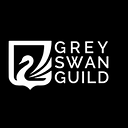Framing & Reframing Problems
Sometimes the problem isn’t the solution, sometimes the problem is the problem — an exploration of Challenge Statements, Question forming and Puzzle solving
We hosted a full discussion on the topic Friday Jun 24th wioth our expert panel of :
Jennifer He, Jonathan Denn and Susan Schramm, moderated by Sean Moffitt.
Have a watch of our LinkedIn Live discussion: https://bit.ly/gsgcraft33framing
Opening Thoughts:
The Semantics of Framing & Reframing Problems:
Context-Setting: Why Do we UnderInvest in Problems?
The Value in Identifying Smart Problems:
#1 They Provide Clarity and Focus to the Work Ahead.
#2 They Enlighten Teams.
#3 They Provide Context to All Functions, All Levels, All People.
#4 They Springboard to Solutions, without Leading Them to It Directly.
#5 They Poke at Assumptions.
#6 They Promote Further Enquiry, Particularly with Customers.
#7 They Inspire People to Action.
#8 They Provide an Outline to How Outcomes will be Judged.
#9 They Center Projects and keep Them on the Rails.
#10 They Provide Glimpses at the Key Questions & Obstacles.
#11 They Provide High Level Consensus of The Value of a Project.
Types of Problems
Criteria for Great Challenge Statement Articulation
#1 Provides Hindsights/Insights/Foresights.
#2 States Underlying Factors.
#3 Written Positively.
#4 Provides Concise Statement (with options to explore context).
#5 Tracks to a Desired Outcome.
#6 Goldilocks Grading — not to broad and not too narrow.
#7 Avoids inherent Bias of the Status Quo or Established Thinking.
#8 Doesn’t Telegraph the Solution, The Answer Should Not Be Known.
#9 Is Not merely an Articulation of Company Vision, Roots Challenge in the Ultimate Stakeholder.
#10 Does Not Focus on Blame or Shift Responsibility or Outcome Unfairly.
#11 Points to the Gap Between the Current and Future State and its Impact on Others.
Exploration Challenge Statement Canvas
Gold Standard — Real Life Winning Challenge Statements
The 5Ws and 2H Tool Of Challenge Statements
The Sins and Watchouts of Challenge Statements
- Loudest Voice in the Room Determines The Language
- You Never Re-examine/Change It When Reality Hits
- You Change It When Your Solution Doesn’t Fit Your intended Plan
- You Don’t Modulate It for Intended Audiences
- You Include Too Much Jargon, Not Understandable to Others
- You Don’t Phrase it as A Question, Invitation or Provocation for Participation
- Lacks Actionability — Spurs teams to Required Steps, Without Expressing Means
- Lacks Specificity — Provides Constraints to Work Against with Enough Room to Explore
- Jumping to the Solution or Root Cause Prematurely
- Not Understanding if You Have Answered the Challenge (SMART — specific, measurable, actionable, realistic, time-based)
- Focusing in on Symptoms to the Real Problem
PROCESS —HOW TO ARRIVE AT GREAT QUESTIONS?
The Power of Questions:
- How Might We…
- What Might Happen If…
- What’s Stopping Us From…
- if X Change Happened, How might we Y Action?
- Why Would We Not…
- What is the best Way…
Resources to Explore
Frame Innovation (book) — Create New thinking By Design (2015)
Upstream (book) — the Quest to Solve Problems Before they Happen (2020)
What’s Your Problem (book) — To Solve Your Toughest Problems, Change the Problems You Solve (2020)
Problem Statement Examples (Nexxia)
How to Write an Effective Problem Statement (ISixSigma)
Social Innovation Challenge Statements (MaRSDD)
Have a watch of our LinkedIn Live discussion: https://bit.ly/gsgcraft33framing
What’s next in our Craft-Building Series?
What’s Going On in the Guild:
Our lastest news article — Volume #2 Edition #21 — Roe v. Wade
This Month’s Feature City Town Hall — June 29th 12pm PT
Our Cygnus Sprints Consulting, Advisory & Change Team Up and Running, the On-Demand All-Stars for a Sped Up, Complex World:
